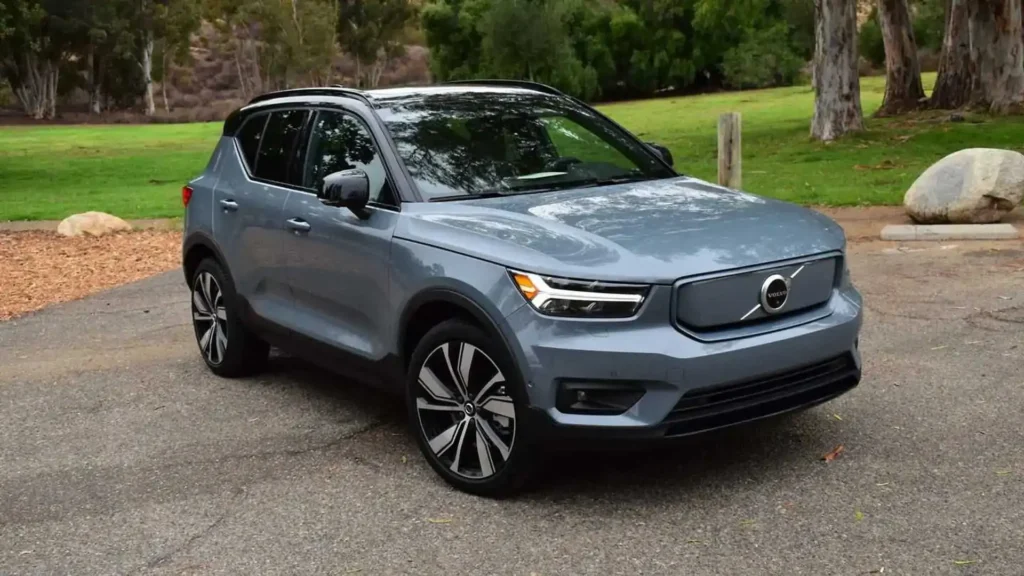Introduction
Volvo Cars Q4 profits decline has set the stage for a turbulent 2025, with the company bracing for economic uncertainties, heightened competition, and shifting consumer demands. As the global car market slows and price competition intensifies, Volvo faces significant challenges in maintaining profitability. Additionally, the electric vehicle (EV) sector continues to experience setbacks due to infrastructure limitations and evolving regulatory pressures. This article examines the factors influencing Volvo’s outlook for 2025 and how the company is positioning itself for the future.
Volvo’s Q4 2024 Profit Decline
Volvo Cars reported a Q4 2024 operating profit of 3.9 billion Swedish crowns (USD 357 million), a significant drop from the 5.4 billion reported in the previous year. This decline includes a 1.7 billion crown writedown related to its battery joint venture, Novo Energy.
However, excluding joint ventures and associates, the company’s operating profit stood at 6.3 billion crowns, down from 6.7 billion in 2023. Despite this dip, Volvo has maintained its core operating profit margin forecast of 7-8% for 2025.
Industry analysts suggest that Volvo’s financial performance reflects a broader industry trend of tightening profit margins amidst high production costs and evolving consumer preferences. As Volvo navigates these difficulties, investors and stakeholders will closely monitor the company’s ability to maintain its strategic focus.
Key Challenges for Volvo Cars in 2025
1. Slower Market Growth
Volvo does not expect the global car market to expand at the same rate as previous years. Several factors contribute to this slowdown:
- Economic uncertainties impacting consumer spending
- Supply chain constraints affecting vehicle production
- Higher interest rates discouraging auto financing
- Changing consumer trends shifting focus towards shared mobility and leasing over outright car ownership
2. Intensified Price Competition
With increasing competition in the electric vehicle (EV) market, automakers are being forced to lower prices to maintain demand. Volvo anticipates price cuts across the sector, which may further affect its revenue and profitability. Several emerging players in the market, particularly from China, are offering competitive pricing and features that make affordability a growing concern for legacy automakers.
Additionally, the push towards sustainable manufacturing increases costs, forcing automakers to find a balance between maintaining margins and staying competitive in the EV market. Volvo’s challenge will be to differentiate its offerings while maintaining strong financial health.

3. Weakened Demand for Electric Vehicles
The EV market is facing significant headwinds due to:
- Lack of affordable EV models limiting consumer adoption
- Slow roll-out of charging infrastructure discouraging long-distance travel
- New tariffs on Chinese-made EVs affecting supply chains and costs
- Consumer hesitancy due to range anxiety and lack of standardization in charging stations
Volvo’s Strategy to Navigate 2025
Despite these challenges, Volvo is implementing strategic measures to sustain profitability:
- Investing in next-generation EVs with enhanced affordability and longer ranges
- Optimizing cost structures to maintain competitive pricing
- Expanding partnerships for battery production and sustainable energy solutions
- Strengthening software and connectivity features to enhance user experience and differentiate from competitors
- Diversifying revenue streams by exploring mobility-as-a-service options, including subscriptions and fleet solutions
Volvo is also focusing on improving its supply chain resilience by securing partnerships for battery materials and exploring local production hubs to reduce dependency on foreign supply chains.
The Role of Government Regulations
One of the major uncertainties for Volvo in 2025 is the role of government policies and regulations regarding emissions, subsidies, and tariffs. As governments push for stricter emissions controls, Volvo must accelerate its transition to electric-only models while managing the costs associated with compliance.
For instance, the European Union’s Euro 7 emissions regulations set to take effect in the coming years will require carmakers to make significant adjustments to their vehicle production, which could impact overall profitability. Similarly, evolving U.S. policies regarding EV tax credits and incentives may influence consumer purchasing decisions, impacting Volvo’s sales projections.
Conclusion
As Volvo Cars braces for a turbulent 2025, it faces multiple challenges, from declining profit margins to an increasingly competitive EV market. However, with a 7-8% profit margin forecast, strategic investments in EV technology, and a focus on supply chain resilience, Volvo aims to navigate these headwinds effectively. By prioritizing innovation, cost efficiency, and regulatory adaptation, Volvo may be able to maintain its position as a key player in the automotive industry.
Industry watchers will be keen to see how the company adapts to market shifts and regulatory changes in the coming year. With an evolving landscape and shifting consumer expectations, Volvo’s ability to adapt will determine its long-term success.
What do you think about Volvo’s 2025 outlook? Share your thoughts in the comments!

